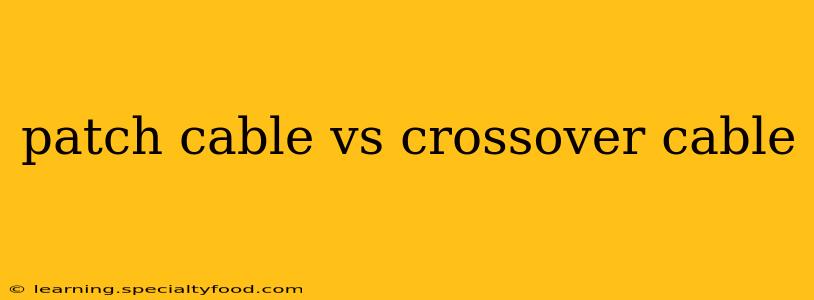Choosing the right cable for your network can seem confusing, especially when faced with options like patch cables and crossover cables. While both connect devices, they serve distinct purposes and understanding their differences is crucial for ensuring your network functions correctly. This guide will clarify the key distinctions between patch cables and crossover cables, answering common questions and helping you select the appropriate cable for your needs.
What is a Patch Cable?
A patch cable, also known as a straight-through cable, is the most common type of Ethernet cable. It uses a standard wiring scheme where pins 1-8 on one end connect directly to pins 1-8 on the other end. This configuration is ideal for connecting a computer to a switch, router, or other network devices. Essentially, it allows communication between a device and a hub or switch that handles the network traffic. Think of it as the everyday workhorse of network cabling.
What is a Crossover Cable?
A crossover cable, unlike a patch cable, uses a different wiring scheme. It crosses over the transmit (TX) and receive (RX) pairs of wires. This means the transmit wire on one end connects to the receive wire on the other end, and vice-versa. This configuration is necessary to allow direct communication between two similar devices, such as two computers, or a switch to a switch, without the need for an intermediary device like a hub or switch.
Patch Cable vs. Crossover Cable: Key Differences Summarized
| Feature | Patch Cable (Straight-Through) | Crossover Cable |
|---|---|---|
| Wiring | Straight-through | Transmit and Receive pairs crossed |
| Use Case | Device to switch/router/hub | Device to device (e.g., computer to computer) |
| Common Use | Most networking situations | Less common with modern switches |
| Intermediary | Requires a hub or switch | No intermediary required |
What is the difference between a straight-through and crossover cable?
The fundamental difference lies in their wiring. A straight-through (patch) cable maintains the same pin order at both ends, allowing communication between a device and a central networking component. Conversely, a crossover cable switches the transmit and receive pairs, enabling direct communication between two like devices without an intermediate component.
Do I need a crossover cable for my network?
In modern networking setups, the need for crossover cables has significantly diminished. Most switches and routers employ auto-MDIX (Medium-Dependent Interface Crossover) technology. This feature automatically detects the cable type and adjusts the connection accordingly, eliminating the need for manual crossover cable selection in most cases. If your devices support auto-MDIX, you can usually use a standard patch cable for almost any connection.
How can I tell if I need a patch cable or a crossover cable?
Unless you're working with older equipment that lacks auto-MDIX, the easiest solution is to simply try a patch cable. If the connection works, you're good to go. If not, a crossover cable might be necessary, though this situation is uncommon today.
Troubleshooting Network Connections: Patch vs. Crossover
If you're experiencing network connectivity issues, start by confirming your devices support auto-MDIX. If unsure, consult your device manuals. Trying a different patch cable is usually the first troubleshooting step, as a faulty cable is a common culprit. Only if a patch cable fails and auto-MDIX is confirmed to be absent should you consider using a crossover cable.
By understanding the differences between patch cables and crossover cables and leveraging the auto-MDIX capabilities of modern networking equipment, you can confidently set up and maintain your network effectively. Remember, a patch cable is your go-to choice in most modern networking scenarios.
